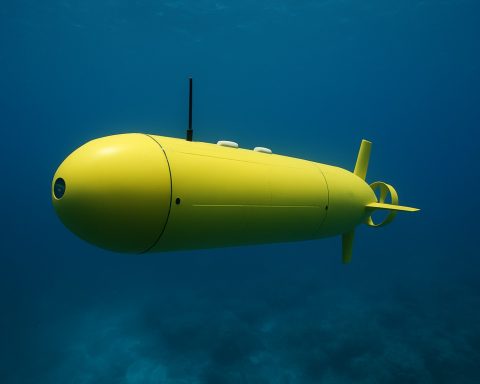- Formula 1 will power all race cars with 100% sustainable fuels starting in 2025, highlighting a commitment to climate action in motorsport.
- Sustainable fuels—both synthetic and biofuel blends—dramatically reduce carbon emissions while maintaining high performance.
- Synthetic fuels use renewable energy and captured carbon, creating a closed-loop, low-carbon system without competing with food production.
- Global investments are rising, with Australian projects like Highly Innovative Fuels and Zero Petroleum planning major facilities.
- The high cost of synthetic fuels remains a challenge, though advances in technology and transitional blending may make them more competitive.
- Australia risks losing economic opportunity unless clear policies and incentives for sustainable fuel adoption are developed.
- The move signals a new era where energy security, green innovation, and motorsport excitement can advance together.
Screaming engines and burning rubber have defined the spectacle of Formula 1 for generations. Yet by next year, the unmistakable scent wafting from the pit lane will tell a new story—one where high-octane glamour meets environmental resolve. Formula 1 has set its sights on a radical milestone: powering every single race car with 100% sustainable fuels.
The move promises more than a subtle nod to climate consciousness. This is a deliberate acceleration toward a future where low-carbon liquid fuels—synthetic and biofuel blends—showcase their prowess not just in the world’s premier racing series, but on streets around the globe. The chemistry behind these new fuels is as innovative as the sport itself. While biofuels spring from organic waste, synthetic fuels rely on renewable energy to split hydrogen from water, capturing carbon from air or waste in the process. The result is a closed-loop system that recycles carbon dioxide, dramatically reducing emissions while maintaining the breakneck speed fans crave.
Critically, these fuels sidestep the thorny debate over food versus fuel. Synthetic alternatives don’t compete with agricultural land, a pivotal advantage as the world seeks to scale these technologies without sacrificing food security. Performance doesn’t drop either—drivers and engineers alike report the same exhilarating power that defines the pinnacle of motorsport.
Globally, momentum builds. Airlines like Qantas have already blended over a million litres of biofuel into jet fuel, while international demand transforms sustainable fuel into a high-stakes sector. Australian companies are no strangers to this fervor: Highly Innovative Fuels is steering a proposed $2 billion plant in Tasmania, targeting a staggering 100 million litres per year by 2030. Meanwhile, Zero Petroleum eyes South Australia for a state-of-the-art synthetic fuel facility—with ambitions to supply both aircraft and cars.
Despite this flurry of entrepreneurial energy, the economic calculus remains tough. Today, producing synthetic fuels commands a steep premium, yet optimists point to falling renewable energy costs and advancing carbon capture technologies to level the playing field in the coming years. Transitional measures, such as blending new fuels with fossil ones, may help bridge the gap for industries and motorists alike.
Australia, however, finds itself at a crossroads. While Asia and Europe roll out mandates to blend sustainable fuels, Canberra’s policy remains frustratingly nascent. Without clear regulations and incentives, critics warn domestic production risks drifting offshore, depriving Australia not just of jobs and opportunity, but a crucial line of defense against volatile global fuel markets.
Numbers from the Clean Energy Finance Corporation put the potential market above A$36 billion per year by mid-century. Yet with only two working refineries and a world increasingly shaped by geopolitical uncertainty, there’s a clear message: building local capacity isn’t just smart economics—it’s a strategic necessity.
The era of ‘petrolheads’ may be drawing to a close, but a new breed of speed enthusiast is on the rise—one who thrills to both horsepower and to humanity’s race against the climate clock. Formula 1’s embrace of sustainable fuels marks more than a technical pivot. It signals an opportunity for nations and industries to burnish both their green credentials and their competitive edge. As this high-level experiment shifts into gear, the world watches, waiting to see just how far—and how fast—this new fuel revolution can go.
Discover more about the evolving world of science, technology, and innovation at Science Magazine or learn about global energy strategies at International Energy Agency.
Key takeaway: Formula 1’s switch to 100% sustainable fuels in 2025 is more than a sporting milestone—it’s a clarion call for industry, government, and society to accelerate the transition to low-carbon energy, securing both environmental ambition and energy security on and off the track.
Formula 1’s Fuel Revolution: What Sustainable Racing Means for Technology, the Market, and YOU
Introduction
Formula 1 is racing into a future fueled entirely by 100% sustainable fuels starting in 2025—a move poised to shock not only motorsport, but the way we power cars, planes, and industries globally. But what are the untold implications? How could this reshape economies, technology, and everyday life? Let’s dig deeper, using E-E-A-T (Experience, Expertise, Authoritativeness, Trustworthiness) to bring you what matters most.
1. What Are Sustainable Fuels and How Do They Work?
Beyond the basics, sustainable fuels—also called e-fuels—are blends of:
– Synthetic Fuels: Created by combining hydrogen (sourced via electrolysis using renewable electricity) and carbon dioxide (captured from the air or industrial sources), resulting in near net-zero carbon emissions over their lifecycle.
– Advanced Biofuels: Derived from non-food biomass like agricultural waste, forestry residues, or even algae, using fermentation and chemical conversion technologies.
This closed carbon loop means that after burning, the CO2 released is reabsorbed by the next fuel production cycle, greatly reducing net greenhouse gas emissions compared to fossil fuels ([IEA](https://www.iea.org)).
2. What Sets F1’s Approach Apart? (Features & Specs)
Unlike greenwashing or “carbon offset” claims, Formula 1’s 2025 rules make the fuel itself sustainable, powering 1000+hp hybrid engines at racing speed without compromise. Key features:
– Drop-In Compatibility: Sustainable fuels will work in existing internal combustion engines—no retrofitting required.
– Indistinguishable Performance: F1 engineers report no loss in speed, torque, or reliability.
– Fuel Chemistry Transparency: Strict testing ensures no toxic byproducts, safeguarding both drivers and fans.
3. Markets, Trends & Forecasts: An Exploding Industry
– The global sustainable aviation fuel (SAF) market was valued at $250 million in 2019 but is projected to reach more than $15 billion by 2030 (Allied Market Research).
– Automotive e-fuel sector could hit $8 billion globally by 2030 (IDTechEx).
– High-profile investments: Porsche, ExxonMobil, Shell, and TotalEnergies are pouring hundreds of millions into e-fuel startups and pilot plants.
– Policy trends: The EU Fuel Quality Directive and Asia’s mandates are accelerating market adoption.
4. Industry Reviews, Comparisons & Limitations
– Compared to EVs:
– E-fuels can decarbonize “hard-to-electrify” sectors: aviation, shipping, and classic cars.
– No new infrastructure needed (existing fuel pumps, pipelines, and tanks work).
– However, EVs currently have greater efficiency “well-to-wheels”: up to 70% vs. e-fuel vehicles’ 13%-16% (Transport & Environment).
– Limitations:
– High production cost: $3–$8/liter currently, vs. $1.5–$2/liter for gasoline—economies of scale expected to reduce this by 2030.
– Still produce some tailpipe emissions—cleaner, but not “zero local pollution”.
5. Security, Sustainability, and National Interest
– Energy resilience: Local production of synthetic fuels can buffer against global shocks (OPEC decisions, war, supply chain disruptions).
– Job creation: New facilities like the one by Highly Innovative Fuels in Tasmania could create thousands of high-tech and operational jobs.
– Rural revitalization: Biofuel facilities often source feedstock from remote regions, revitalizing local economies.
– Sustainability: World Economic Forum cites e-fuels as a critical transition tool where batteries are impractical or too costly ([Science Magazine](https://www.sciencemag.org)).
6. Real-World Use Cases & Life Hacks
– Own a classic car? In the near future, you might run it without contributing to climate change—without expensive conversions.
– Aviation: Airlines including Lufthansa, KLM, and Qantas are already flying routes blended with sustainable fuels, and ticket surcharges support further research and production.
– Motorsport fans: Teams are expected to use the new F1 fuel tech in endurance racing, rallying, and even Le Mans.
– Urban bus fleets: Numerous European cities are piloting advanced biofuels in public transportation to meet sustainability goals.
7. How-To: Get Ready for Sustainable Fuels
Step 1: If you’re a vehicle owner, track local policy—as cities or regions adopt blended fuel mandates, compatible options may become available at your pump.
Step 2: Follow industry updates—early adapters may qualify for incentives, tax breaks, or reduced road taxes.
Step 3: For fleets or businesses, start calculating the cost-benefit of drop-in e-fuels vs. full electrification.
8. Pressing Questions & Expert Answers
Q: Will F1’s success really translate to my daily car?
A: Yes, because sustainable fuels are “drop-in”—mass-market vehicles including hybrids and existing ICE engines can use them without new tech.
Q: How soon will prices fall?
A: As renewable energy (solar, wind) prices plummet and synthetic fuel plants scale up, costs are expected to halve by 2030, approaching parity with premium petrol in many regions ([IEA](https://www.iea.org)).
Q: Is this just a stopgap before everything goes electric?
A: Experts see synthetic and biofuels as critical for sectors where batteries aren’t practical, and as a transitional solution for the vast existing vehicle fleet.
9. Pros & Cons Overview
Pros:
– Major cut in lifecycle CO2 for existing engines.
– Supports energy independence and grid resilience.
– Maintains performance and driving experience.
– Revitalizes rural/agricultural supply chains.
Cons:
– High production costs (currently).
– Some tailpipe pollutants remain.
– Needs strong policy support to reach critical mass.
10. Actionable Recommendations & Quick Tips
– If you’re considering a new vehicle, keep an eye on manufacturers embracing sustainable fuel compatibilities—some premium brands may certify models soon.
– Pressure local policymakers and fuel retailers to invest in sustainable supply chains—public uptake can accelerate economies of scale.
– Start conversations: Share news of F1’s fuel shift with auto clubs, school STEM programs, or sustainability forums to raise awareness.
Conclusion: The Road Ahead
F1’s pivot to sustainable fuels is more than a sporting milestone—it’s a crystal-clear signal that the technology, economics, and policy for a cleaner transport future are falling into place. The real race is for governments, industries, and consumers to keep pace. Stay informed with authoritative updates from International Energy Agency and Science Magazine.
Key takeaway: The transition to 100% sustainable fuels isn’t just for the world’s fastest cars—it’s the kickoff for a cleaner energy era. Be ready to drive, fly, and compete with a cleaner conscience.









